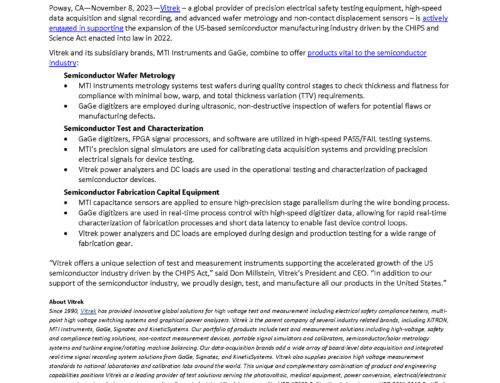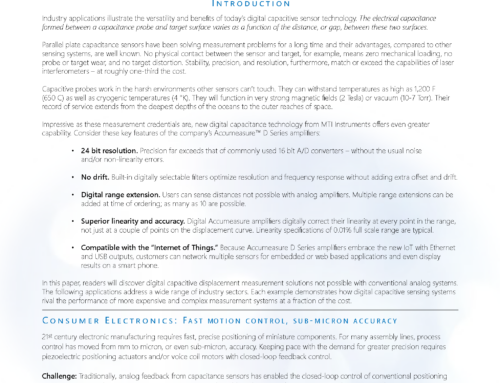Capacitance Sensors vs. Eddy Current Sensors Application Note
Capacitance sensors and Eddy current sensors are both used for non-contact measurements. Capacitive probes use electric fields to measure the distance from the sensor face to the surface of a target that is typically conductive and grounded. Eddy current probes use an alternating AC current to induce a magnetic field in a conductive target instead. In turn, the induced magnetic field produces a back magnetic field that is proportional to the gap between the probe face and the target.
In a recent application note, MTI Instruments examines the differences between capacitance sensors and Eddy current sensors in terms of their basic operating principles and relative advantages. For example, the sensors in capacitive probes only sense the conductive surfaces. They are immune to subsurface magnetic effects and surface conductivity as seen in differ target materials. In EV battery production, this enables them to sense EV film step height and not sense through the film to the roller which is not desirable. Eddy current probes have a larger sensing footprint and are immune to non-conductive contamination but also sense nearby objects.
MTI’s application note also contains a quick comparison table for capacitance sensors and Eddy current sensors. This analysis includes small targets, large ranges, thin materials, resolution, bandwidth, cost, and material composition since Eddy current sensitivity is dependent on material type while capacitive sensing is not. Capacitance probes are generally a better choice for non-contact sensing, but a sensing environment that is dirty, contaminated, or wet may require an Eddy current probe instead.
Read this app note on-line at Comparing Non-Contact Sensors: Capacitive vs. Eddy Current.



